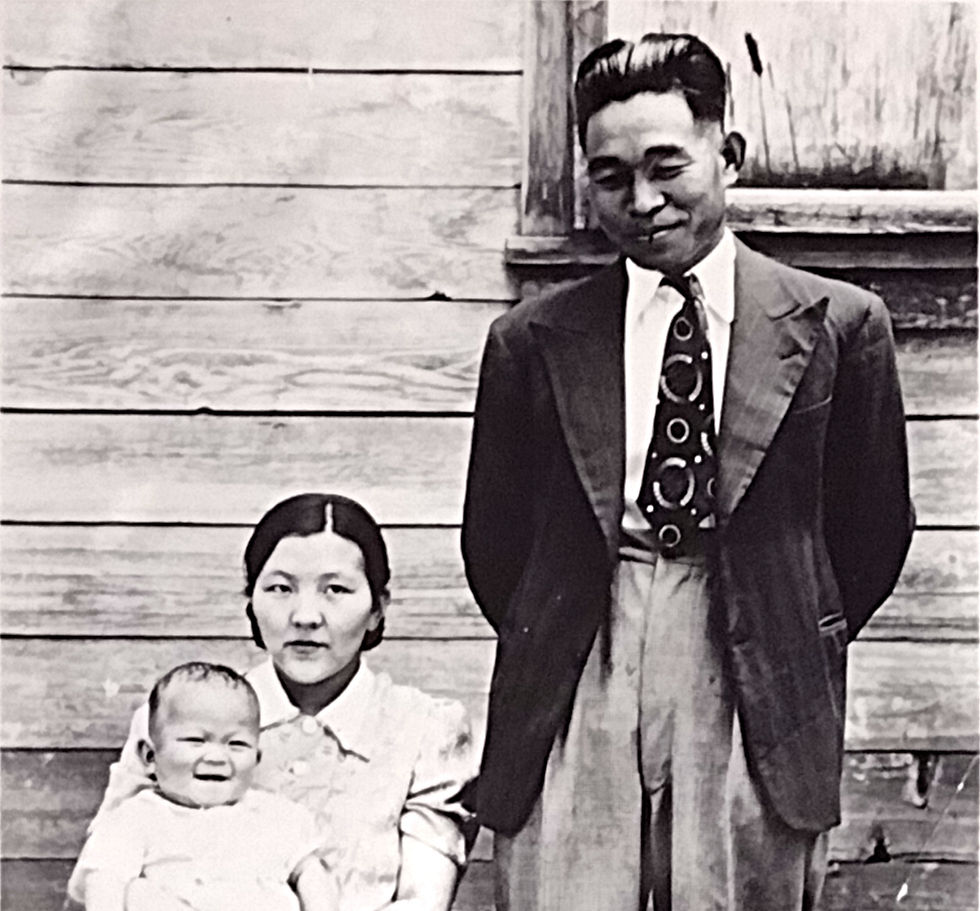Written in concrete
- Greg Nesteroff

- Sep 8, 2018
- 3 min read
Updated: Sep 8
A little to the northeast of the Sandon cemetery — which is on a hillside about 1.4 km northwest of the ghost town — lies a concrete slab with the inscription: “July 8, 1942/Ken Sato.”
It’s not a gravemarker, although I suspect its proximity to the cemetery has led to the erroneous belief that Japanese-Canadians were buried there during the internment era.
There were cremations at Sandon, but no burials I am aware of. According to the BC vital events index, 14 Japanese-Canadians died at Sandon between September 1942 and April 1944; the first three were cremated at Sandon and the remaining 11 at New Denver. None were buried.
I looked at the death registrations of 239 other Japanese-Canadians who died between 1942 and 1979 in New Denver, Slocan, Silverton, Rosebery, Lemon Creek, Nakusp, and Kaslo, and found that only about 10 per cent were buried.
But back to the concrete slab. I first saw it in 2006 with the letters outlined in moss, as seen below.

When I returned in August 2018, I saw that someone had cleaned the moss off, making it easier to read.

When I went back in August 2019, it had been cleaned up much more, although I am not sure who did it.

It’s actually quite close to the road, but you would never guess it was there.
According to a report prepared on the Sandon cemetery in 1996 by Dan Pasemko, “dominant opinion is that a Nikkei worker had simply written his name and the date into the wet concrete while involved in work around the old Altoona mine bunkhouse.”
I’m pleased to report that I’ve learned a little bit about him.
Ken Sato was born on Aug. 7, 1923, an only child. His father died before World War II. He was 18 when Japanese Canadians were interned in the West Kootenay/Boundary, including at Sandon, which initially received three parties: a group of 70 who arrived on June 13, 1942, another 213 who came either four days or 11 days later (the news story below leaves it a bit ambiguous), and a third group of 200 who belonged to the Buddhist Church who came at the end of the month. Eventually the population reached 933, a large number of whom were elderly men.

In any case, Sato wrote his name in concrete within weeks if not days of his arrival. It’s not known how long he spent in Sandon, but by September 1944 he was living in New Denver, and about to move to Ontario. In a list of Christmas greetings published in The New Canadian newspaper that year, he gave his address as 355 Macnab St. North in Hamilton. He was believed to be in Montreal in June 1946 when a friend, Pte. Tak Sato of Toronto, placed an ad looking for him.
In May 1947, Sato became engaged to Miyoko Yamamoto of Taber, Alta.

Unfortunately, I didn’t get a chance to talk to him before he died in Vernon on Dec. 22, 2017, age 94. He was survived by his wife of 70 years, plus son Alfred and daughters Linda and Betty, as well as three grandchildren and five great grandchildren. It was only due to his obituary that I finally learned who he was. The picture seen here is from his obituary.
“He never said too much of his stay in Sandon,” Alfred told me. “Only that he was sent there.”
Sato’s decision to write his name in concrete not only immortalized him, but it is now one of the few remaining signs of the internment era in Sandon.
It reminds me of another incident in 2014 when a handful of Japanese-Canadian names were found on an exterior wall of the Slocan Legion during renovations.
The most legible — and stylish — signature belonged to “Sam Miyashita, Popoff, Slocan.” It must have been put there between 1942 and 1945. It turned out that Miyashita moved to Toronto, where he was a musician and artist known as Sam Sueshi Miya.
Two weeks before his signature was discovered in Slocan, he died at age 84.
Updated on Aug. 22, 2019 to add the most recent photo of the concrete slab.
—————————
For more on Sandon, check out my new book at kingofsandon.com



Comments